A graduate of Indiana University, Pauline Montgomery was a resident of Wayne County, Indiana, and spent most of her life working as an English and Latin teacher. However, Pauline and her husband, Robert, had a somewhat unusual interest — photographing tombstone iconography in eastern Indiana cemeteries. Just the hobby we all secretly want to take up, right? Actually though, I must admit that I have a fascination with death rituals.
Over her lifetime, Montgomery amassed a collection of nearly sixteen hundred tombstone photographs with a particular focus upon unusual grave markers and tombstones often with decorative or ornamental features. That’s a lot of time spent in cemeteries!
Although I very much enjoyed looking through a large number of the photographs, there isn’t space to show all of the pictures here. Below is only a small sample of photographs that I found most interesting. Notice the varied fonts, dates, and iconography.
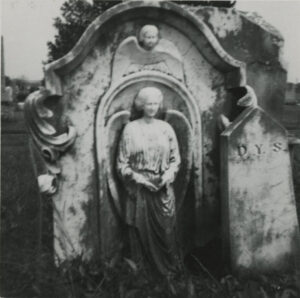
There were a large number of tombstones for children, a reminder that life expectancy, especially for children, was much shorter than it is today. These tombstones were usually accompanied by a carving of a sleeping child or lamb, or in a few instances, a heart-wrenching carving of a pair of empty shoes. One example that I was surprised to see were tombstones in the shape of tree stumps symbolizing a life cut short – although I saw two examples of tree stump tombstones for those in their seventies.
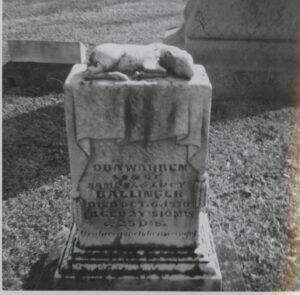
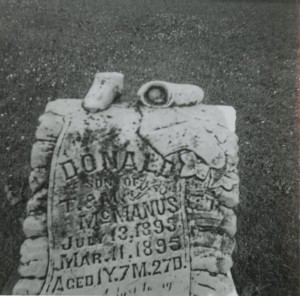

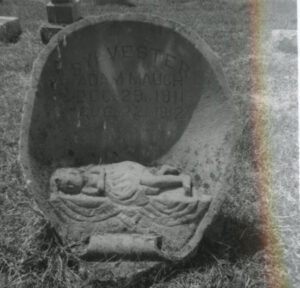
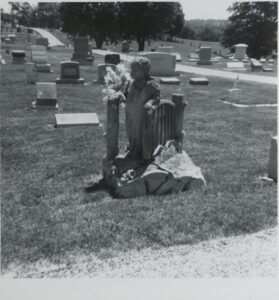
Military tombstones were also common finds among the photographs.

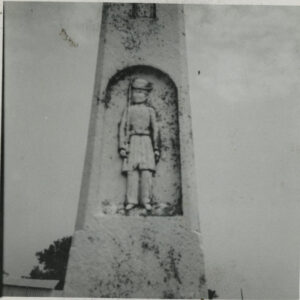

The vast majority of the tombstones feature Christian imagery, such as crosses, depictions of Jesus or the Virgin Mary, heavenly light, wheat, doves, Bibles, and angels. Also very common were engravings of hands praying, shaking, or pointing upwards to heaven.
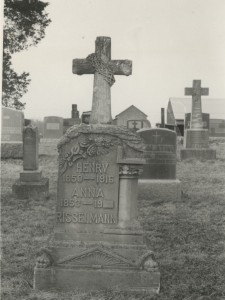


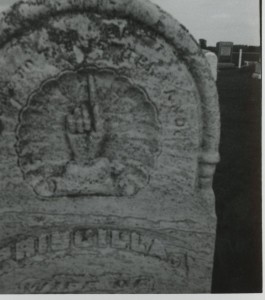

Below are a selection of other various types of tombstones and iconography found in the Montgomery collection. Note this first one, which features the biblical quote from Romans 12:19 along with the image of a noose. A bit of research using historic Indiana newspapers led me to the answer. John Davis and his brother, Jesse, kidnapped and raped a fourteen year girl from the Clark Township. They then left her tied to a tree in the woods, where she was discovered by a search party. A group of fifty armed vigilantes set out after the brothers. They caught up with John first and promptly hung him.




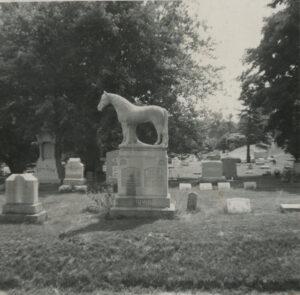

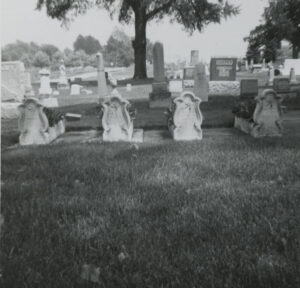


The above are only a small sample of image from the Montgomery collection, to see more, please contact the IU Archives!
Leave a Reply